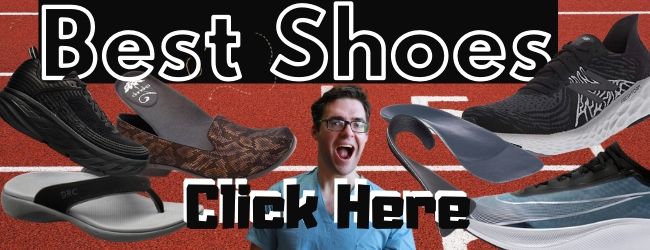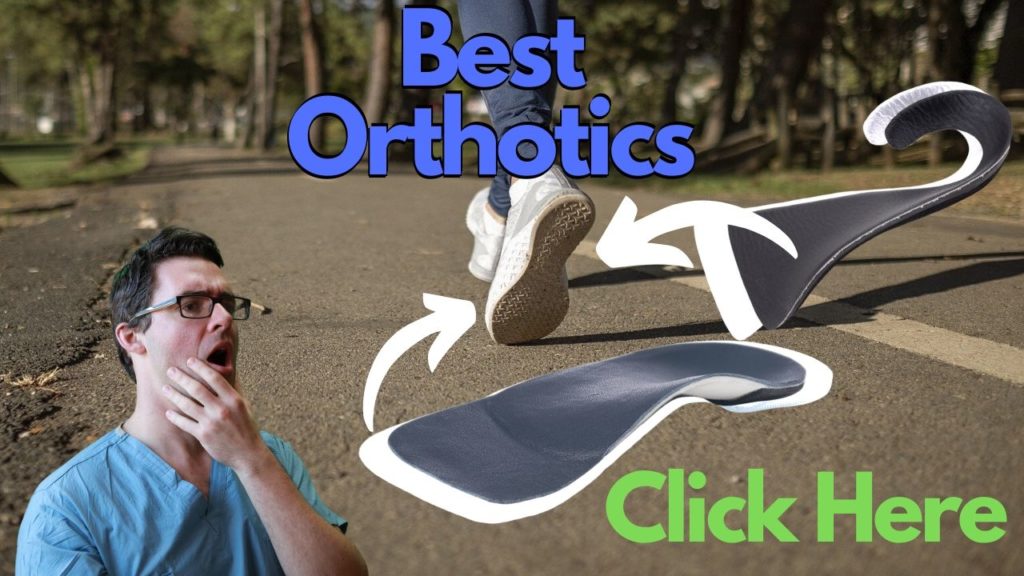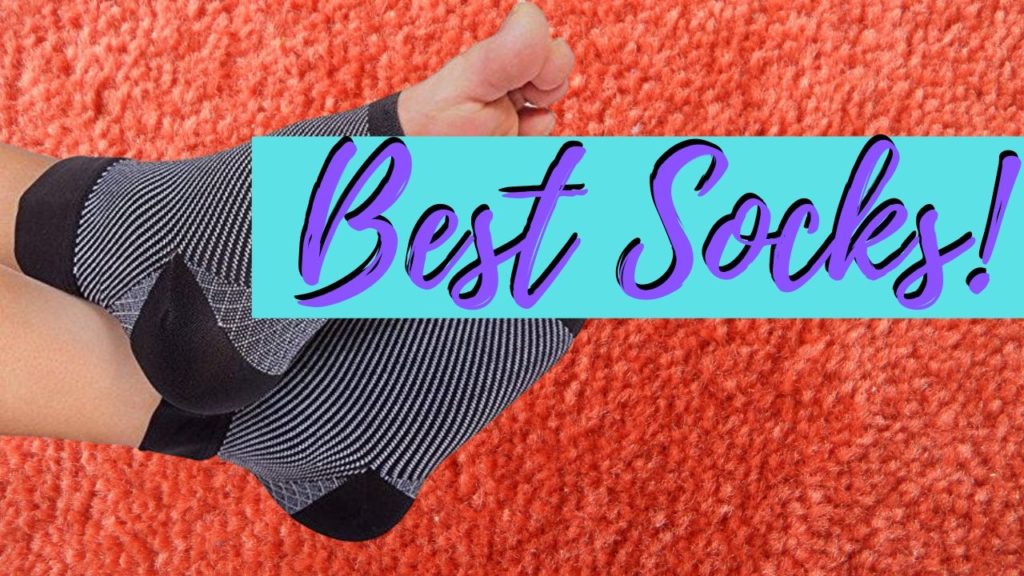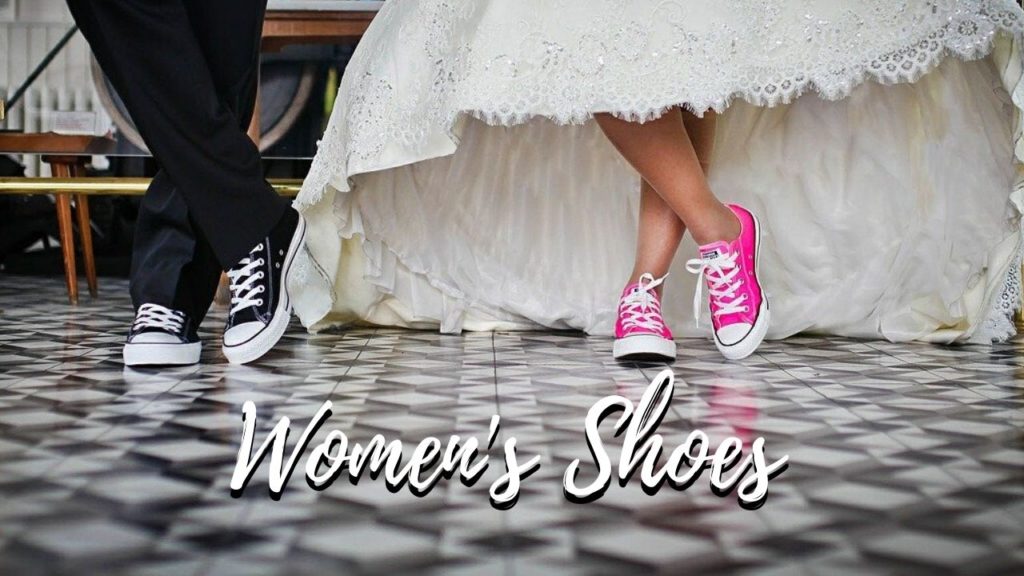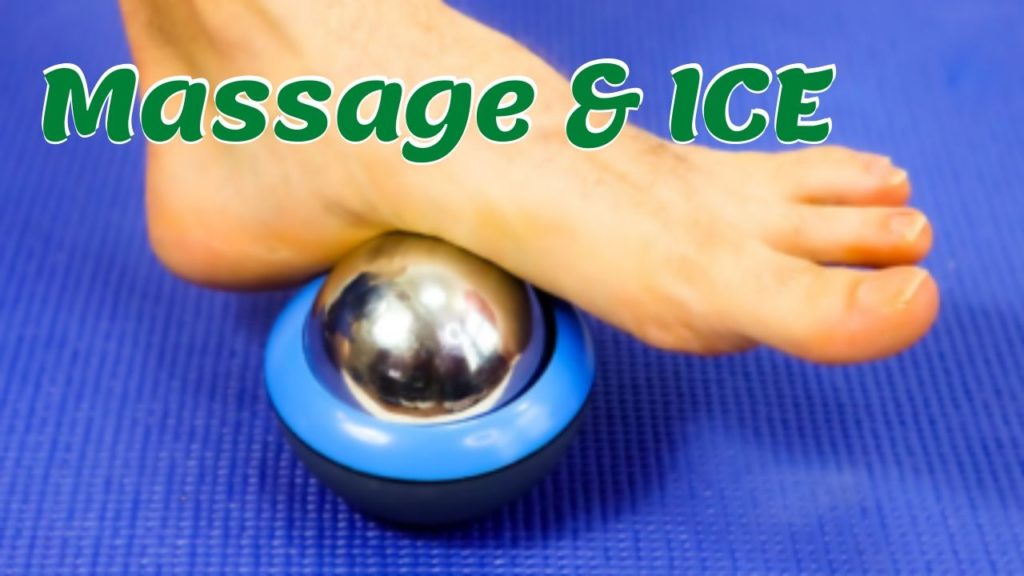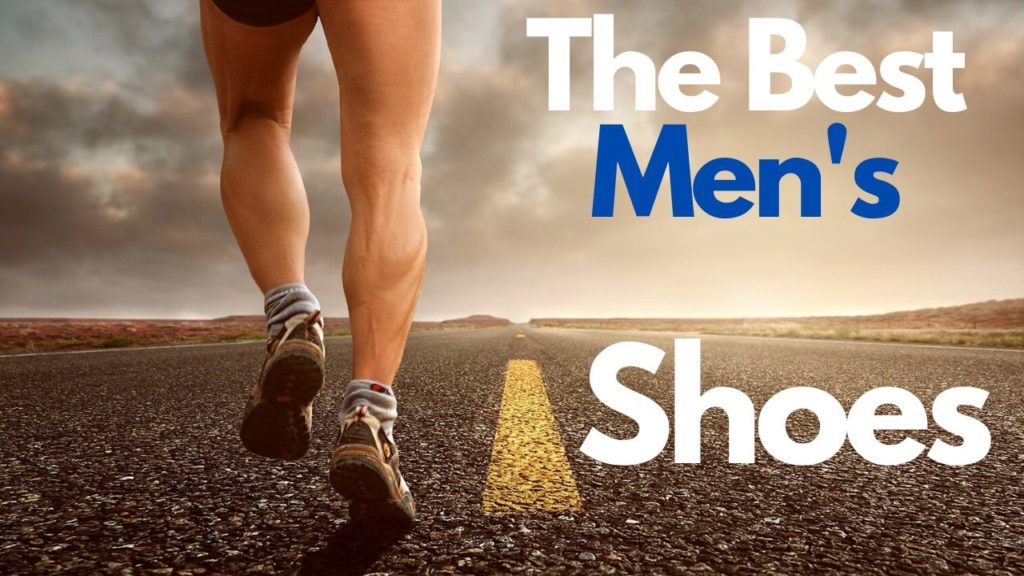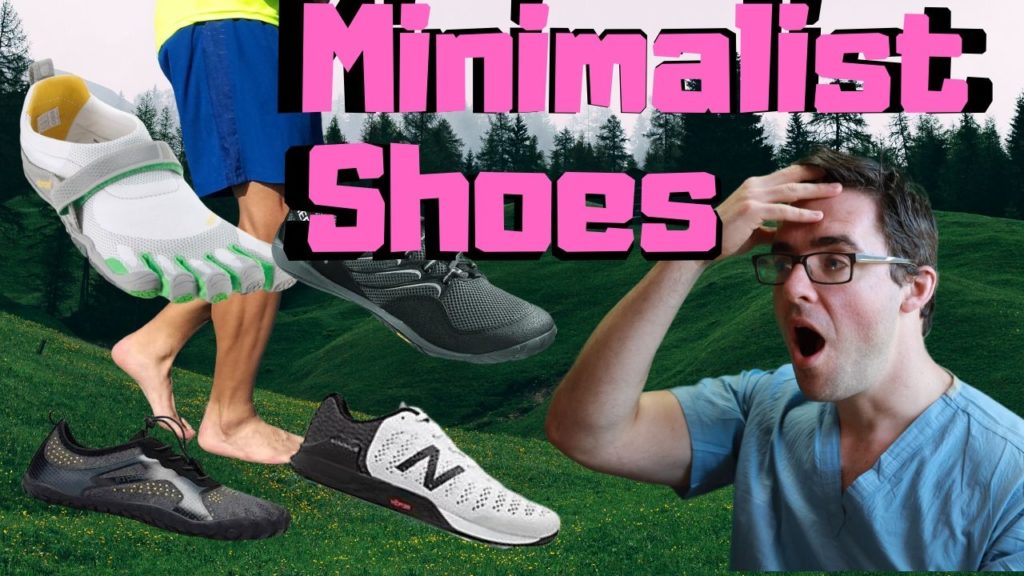Heel Pain After Running [Causes, Symptoms & Best Treatment]
Heel pain after running has three common causes: #1 is overpronation and bottom of the heel pain, #2 is Achilles Tendonitis and #3 is flat foot pain!
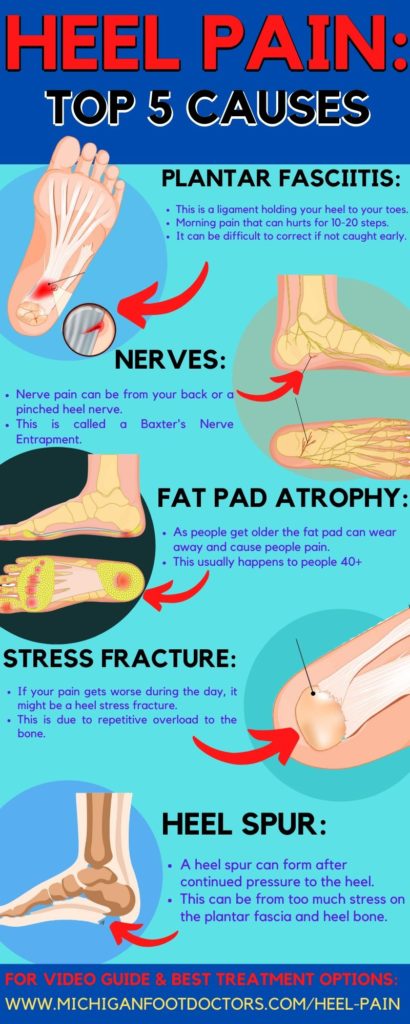
Table of Contents
Heel Pain Causes: Picture & Photo Gallery
Look:
- One of the top causes of heel pain is plantar fasciitis. This is damage to a ligament that holds your heel to your toes.
- Another root cause of heel pain has flat feet.
- There are also photos of heel spurs that can occur to the bottom of your heel (plantar fascia insertion) and the back of your heel (Achilles tendon insertion).
- Baxter’s nerve entrapment can also happen at the bottom of the heel.
- An underlying cause is an overpronated flatfoot or an over a supinated high arched foot.
- A plantar fibroma is a thick nodule that can occur within your plantar fascia ligament and contribute to plantar fasciitis.
- This can lead to the formation of a heel stress fracture( AKA calcaneus stress fracture.)
Please click on the gallery for a guided tour through heel pain conditions!
 The most common causes for Heel pain after running:
The most common causes for Heel pain after running:

If you experience heel pain after running you may have a stress fracture to your calcaneal bone (heel bone). Another very common cause for heel pain is a heel spur. This is a growth on the heel bone that causes irritation to the surrounding tissue and may cause plantar fasciitis.
- Plantar fasciitis
- Heel spur
- stress fracture
- Poor arch support
- flat feet
- High arches
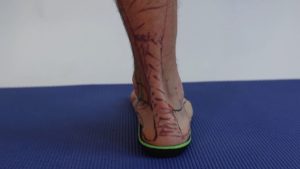
Plantar fasciitis:
- Plantar fasciitis is the inflammation of the plantar fasciitis.
- The plantar fasciitis is a tissue that runs from your heel bone to your toes. If this tissue is over stressed and becomes inflamed your will experience sharp pain.
- The plantar fasica absorbs the pressure to your foot well walking or running and acts as support for your arch.
- Because of this proper foot wear and arch support will help with both help to preventing plantar fasciitis and alleviate symptoms.
- Being over weight can cause a lot more pressure to your plantar fascia as you walk.
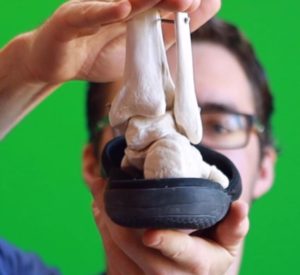
Plantar fasciitis symptoms
The first few steps of the day are common to experience pain. The pain usually goes away through out the day but is most likely to return. Experiencing pain with plantar fasciitis can be set off for multiple reasons such as if standing for extended periods of time, getting up after sitting for to long and After exercise not during.
- Pain with the first steps of the the day
- Heel pain after running
- Calve tightness
- Experiencing pain after exercise
- pain upon standing
- foot pain standing for extended periods of time
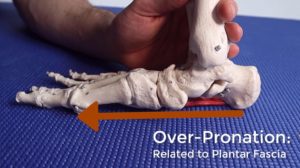
Foot Pain Due To Running:
If you experience any foot pain it is best to seek out your physician to take the appropriate steps to make a recovery as fast as possible.
Click on the links to find out what is causing this pain!
If your big toe is bent and you are having pain in your big toe.
If your big toe is straight, if you have difficulty bending it due to a big lump and you are still having pain to this site.
If the central three toes in your foot are still hurting.
Click this link if you think you jammed your big toe and it is causing you to walk on the side of your foot.
Click on this link if you think the entire front of your foot is aching.
If it is mostly underneath your second toe that is hurting.
If the majority of your pain is coming from the fifth toe.
If the pain is in the front, but mostly on the outside of your foot.
If it is in the middle of the foot but mostly on top.
If you think arthritis is what is causing this pain.
If you get cramps or spasms during the day.
If you have a very long second toe that is causing you pain.
Heel Pain After Reading Treatment:
- There are usually two phases to bottom of the foot pain treatment.
- The two phases of treatment include controlling the acute inflammation, and correcting the biomechanics which led to the problem in the first place.
- If the tendons and ligaments are inflammed, they are almost frozen in place and cannot function properly.
- Once the inflammation is decreased, we need to correct the biomechanical causes to ensure that they can never become over worked and inflammed again!
- This doesn’t matter whether it’s plantar fasciitis, plantar fibroma, sore bottom of foot, or even Achilles tendon pain. Treatment is all roughly very similar.
Heel Pain Inflammation Control:
Massage & Ice Products:
- Ice is the an excellent option that can be safe for almost everyone.
- There is some debate whether icing is worth doing, but for chronic pain this can help limit the need for medications and keep your options open.
- This works great for your arch, less for the ball of the foot.
- The more muscle and ligament tissue there is, the better ice will work there.






Menthol Based Gels:
- Biofreeze is one of our favorites.
- These gels have been studied to work 2x as long as ice.
- This works great for the ball of the foot.
- This can be very effective for bottom of the heel and Achilles tendon sore regions.








Massage Sticks:
- These can work great for loosening your muscles.
- This allows less tightness and pressure on the ball of your foot.
- This is very effective for the arch, the gastrocnemius or calf muscle and for the hamstring and thigh muscles.
- This also works very well for the gluteus muscles if you are having butt cheek or hip pain.






Removing The Stress:
- The key is to prevent future pain.
- If you can get rid of the pain and swelling, this will let you start walking normally.
- If you can walk normally, the vast majority of your pain should gradually start to go away.
- The best way to ensure that your plantar fascia, foot and ankle ligaments are not overworked is to support them.
- The best way to support them is to use great orthotics and great shoes.
- Some people may also need to rely on supportive ankle braces and other supportive modalities.
Best Heel PainShoes:
- Getting a great supportive pair of shoes will make sure that there is pressure removed from the heel and plantar fascia region.
- This is especially important if you have plantar fasciitis, heel spur pain or Achilles tendonitis.
- Consider shoes combined with a good supportive orthotic for best pain relief!
- The following link will show you what our favorites are.
Best Heel Pain Orthotics:
- These are our recommended orthotics.
- There are different types for different shoes.
- Women’s shoes usually need a less bulky orthotic, but allow for less correction.
- A full length orthotic requires a running shoe, boot or comfortable walking/dress shoe.
- We recommend doing everything you can to get a good supportive shoe that can fit a full length orthotic.
- This is the best way to maximize your orthotics for great results.
Best Full Length Orthotics:
- These will only work in wider shoes or a good supportive running shoe.
- This will not work in sandals, flats or most women’s dress shoes.








Best Dress Shoe Orthotics:
- These are a great choice for dress orthotics.






Best 3/4 Length Orthotics:
- These are great options for women’s dress shoes and thinner shoes.
- These are not the most supportive pair of orthotics.


Get A Great Dynamic Stretch:
- It is possible to stretch on your own, but these products can also really help!
- This will take pressure off of the ball of your foot.
- We personally prefer this method of stretching.








Get A Great Static Stretch:
- These devices are great for stretching while you are resting.
- This will also help take pressure off of the ball of your foot.
- This works great for plantar fasciitis.
- It can be used while watching TV or at night time.






